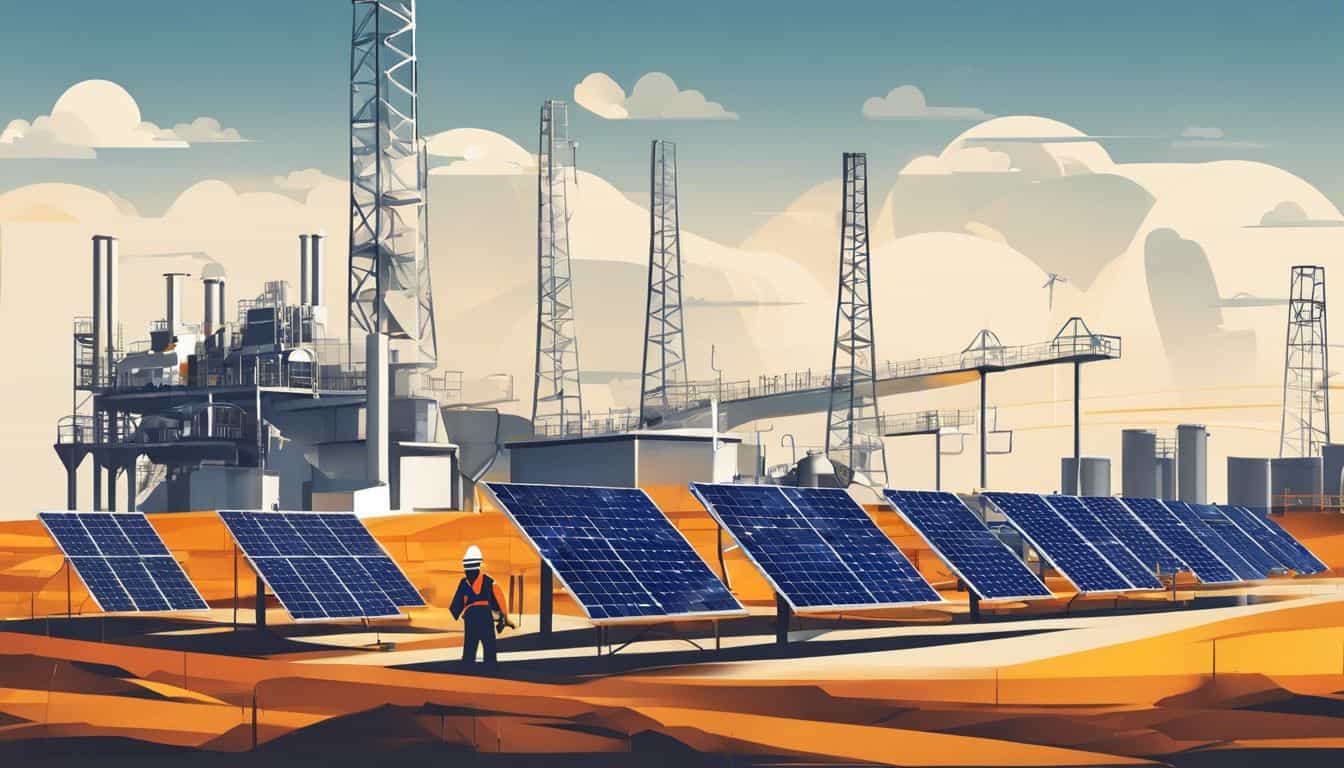Concentrating Solar Power (CSP) technology has emerged as a promising solution in the renewable energy landscape, offering the potential for large-scale, dispatchable clean energy. However, the deployment of CSP plants faces several challenges that need to be addressed to accelerate its adoption. This article explores innovative solutions for overcoming these hurdles and paving the way for widespread CSP deployment.
Current Challenges in CSP Deployment
Before delving into solutions, it’s crucial to understand the primary challenges facing CSP deployment:
These challenges have historically limited the widespread adoption of CSP technology. However, innovative solutions are emerging to address each of these issues.
Economic Solutions
Reducing the cost of CSP plants is paramount to their widespread adoption. Several strategies are being employed to achieve this:
Cost Reduction in Heliostats
Heliostats, the mirrors that concentrate sunlight, account for 30-50% of a CSP plant’s capital expenditure (CAPEX). Innovations in heliostat design and manufacturing processes are crucial for cost reduction. Advanced materials and automated production techniques are being developed to significantly lower heliostat costs.
Improving Overall Plant Efficiency
Enhancing the efficiency of CSP plants can dramatically improve their economic viability. This includes optimizing the mechanics of concentrating solar power systems to maximize energy capture and conversion.

Innovative Financing Models
New financing models, such as power purchase agreements (PPAs) and green bonds, are being utilized to make CSP projects more attractive to investors and reduce the burden of high upfront costs.
- High initial costs
- Significant water consumption
- Extensive land use requirements
- Technological complexities
Technological Advancements
Technological innovations are at the forefront of making CSP more competitive:
Heliostat Design Improvements
Advanced materials and optimized tracking systems are enhancing the performance and durability of heliostats while reducing costs.
Thermal Energy Storage Solutions
Improved thermal storage systems, including molten salt technologies and novel phase-change materials, are extending the operational hours of CSP plants, making them more valuable to the grid.
High-Temperature Heat Transfer Fluids
New heat transfer fluids capable of operating at higher temperatures are increasing the efficiency of CSP systems.
Advanced Power Cycles
Supercritical CO2 power cycles are being developed to increase the efficiency of power generation from CSP plants.
For a more detailed exploration of these and other innovations, check out this guide to concentrated solar power innovations.
Water Conservation Strategies
Water consumption has been a significant concern for CSP plants, especially in arid regions where solar resources are abundant. Several solutions are being implemented:
- Dry cooling technologies that significantly reduce water usage
- Hybrid wet-dry cooling systems that balance efficiency and water conservation
- Water recycling and treatment systems to minimize freshwater consumption
- Alternative heat transfer fluids that require less water for cooling
Land Use Optimization
Optimizing land use is crucial for the sustainable deployment of CSP plants:
- Compact heliostat field designs that reduce the overall footprint of CSP plants
- Multi-use land strategies, such as agrivoltaics, that combine solar energy production with agriculture
- Advanced site selection tools that help identify optimal locations for CSP plants, balancing solar resources with land use considerations
Policy and Regulatory Solutions
Supportive policies and regulations are essential for accelerating CSP deployment:
- Government incentives and subsidies to make CSP more competitive with conventional energy sources
- Streamlined permitting processes to reduce project development timelines
- Increased funding for research and development to drive technological advancements
- International cooperation and technology transfer to spread best practices globally
Case Studies
Several successful CSP deployments worldwide offer valuable lessons:
- The Noor Complex in Morocco, which demonstrates the potential for large-scale CSP in developing countries
- The Ivanpah Solar Electric Generating System in California, which has provided insights into operational challenges and solutions
- The DEWA project in Dubai, which is setting new benchmarks for cost-competitiveness in CSP
These projects showcase the potential of CSP and provide valuable insights for future deployments.
Future Outlook
The future of CSP deployment looks promising, with emerging technologies and integration strategies enhancing its value proposition:
- Novel CSP designs, such as beam-down systems and particle receivers, promise higher efficiencies and lower costs
- Integration of CSP with other renewable energy sources, like photovoltaics, to create more reliable and flexible power systems
- Potential for cost parity with conventional energy sources as technology improves and economies of scale are realized

Conclusion
The deployment of concentrating solar power plants faces significant challenges, but innovative solutions are emerging to address these hurdles. From economic strategies and technological advancements to water conservation methods and policy support, a multi-faceted approach is necessary to accelerate CSP adoption.
As these solutions continue to evolve and mature, CSP is poised to play an increasingly important role in the global energy mix. By harnessing the power of innovation and collaboration, we can unlock the full potential of CSP technology and move closer to a sustainable, clean energy future.
FAQ
What financing models make CSP projects viable beyond government subsidies?
Public-private partnerships (PPPs) and virtual power purchase agreements (VPPAs) are gaining traction. The Dubai DEWA project used an independent power producer (IPP) model, attracting $4.3 billion in private investment. Corporate buyers like Google now use VPPAs to lock in 24/7 clean energy, with CSP’s storage advantage commanding 15–20% price premiums over PV-only deals.
How do modern CSP plants reduce water use compared to traditional systems?
Advanced air-cooled condensers cut water consumption by 90% (from 3,500 to 350 liters/MWh). The MINWATERCSP project in Spain uses laser-cleaned mirrors and recycled wastewater, saving 1.4 million m³ annually—enough to supply 3,500 households. Hybrid plants like China’s Dunhuang 100MW CSP+PV facility share cooling infrastructure, reducing per-MWh water needs by 40%.
What emerging technologies address CSP’s land-use challenges?
3D-printed heliostat fields optimize mirror density, fitting 30% more units per hectare. South Africa’s Redstone plant uses elevated receivers to enable grazing beneath mirrors. The EU’s MOSAIC project tests floating CSP platforms in reservoirs, eliminating land competition while improving cooling efficiency.
How does AI improve CSP plant performance?
Machine learning predicts mirror soiling with 95% accuracy, optimizing cleaning schedules. At Noor Energy 1, AI-driven alignment boosts energy yield by 8% daily. Startups like Heliogen use computer vision to maintain 0.1-degree mirror precision, increasing annual output by 12,000 MWh in 100MW plants.
Can CSP work in non-desert climates?
Germany’s Jülich Solar Tower operates at 50°N latitude with adaptive optics, achieving 43% efficiency in diffuse light. New England’s first CSP pilot uses polar-aligned heliostats and frost-resistant coatings to generate steam at -15°C. These innovations expand viable locations by 22% compared to 2020 capabilities.
What makes newer CSP plants more dispatchable than older designs?
Multi-tank molten salt systems now provide 18-hour storage (vs. 7 hours in 2010). Chile’s Cerro Dominador uses solar-charged graphite batteries for night-time voltage support, responding to grid signals in under 100ms. Advanced plants can ramp from 20% to 100% output in 8 minutes—faster than natural gas peakers.
How are CSP costs reaching parity with fossil fuels?
Modular tower designs cut installation costs by $0.12/W since 2020. Morocco’s Noor Midelt II achieved $0.054/kWh through standardized components and local manufacturing. The World Bank’s Scaling Solar CSP program reduced project development timelines from 7 years to 3.5 years, slashing financing costs by 35%.
Could CSP integrate with other clean energy technologies?
Pioneering projects like Australia’s Aurora Energy Platform combine CSP with:
- Green hydrogen production (8,000 tons/year) using excess heat
- Lithium bromide absorption chillers for industrial cooling
- Direct air capture systems powered by thermal energy
This triples revenue streams compared to electricity-only models.
What workforce development challenges does CSP face?
The U.S. Department of Energy’s CSP Workforce Initiative identifies critical gaps:
- High-temperature fluid specialists (1,200 needed globally by 2027)
- Solar-thermal grid integration engineers (57% shortage in key markets)
- Robotics technicians for automated mirror farms
Apprenticeship programs in Spain now certify 450 technicians annually through VR simulations.
How do newer materials improve receiver efficiency?
Ceramic-coated receivers withstand 1,050°C vs. 565°C for steel. China’s Dacheng Dunhuang plant uses sodium-cooled receivers achieving 92% absorption efficiency. MIT’s 2024 photonic crystal design reflects 99.7% of non-target wavelengths, boosting net conversion by 14%.
Learn more:

Leave a Reply